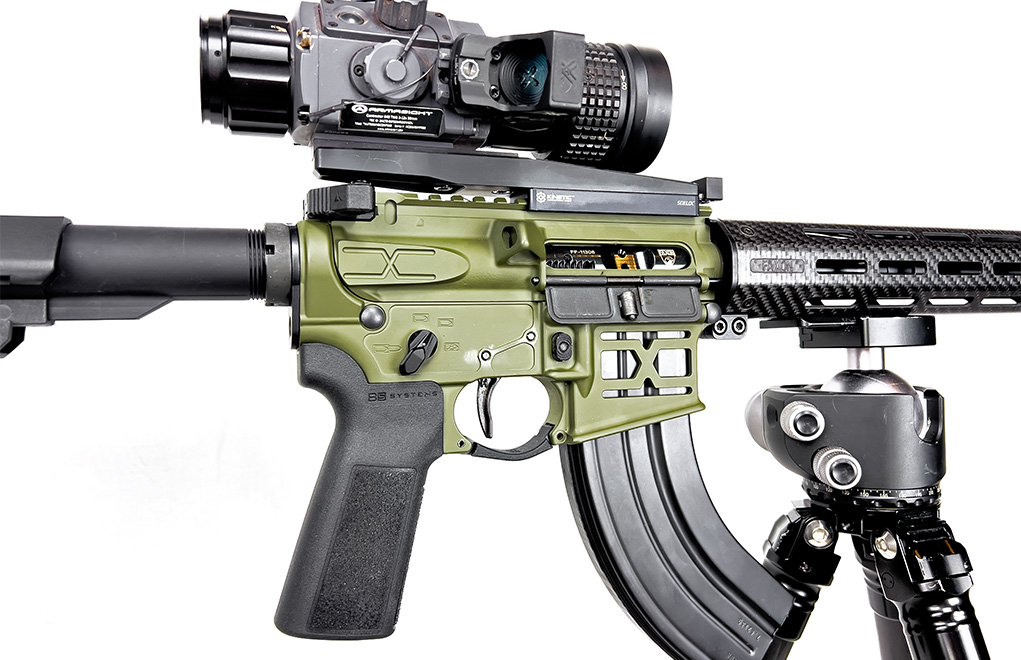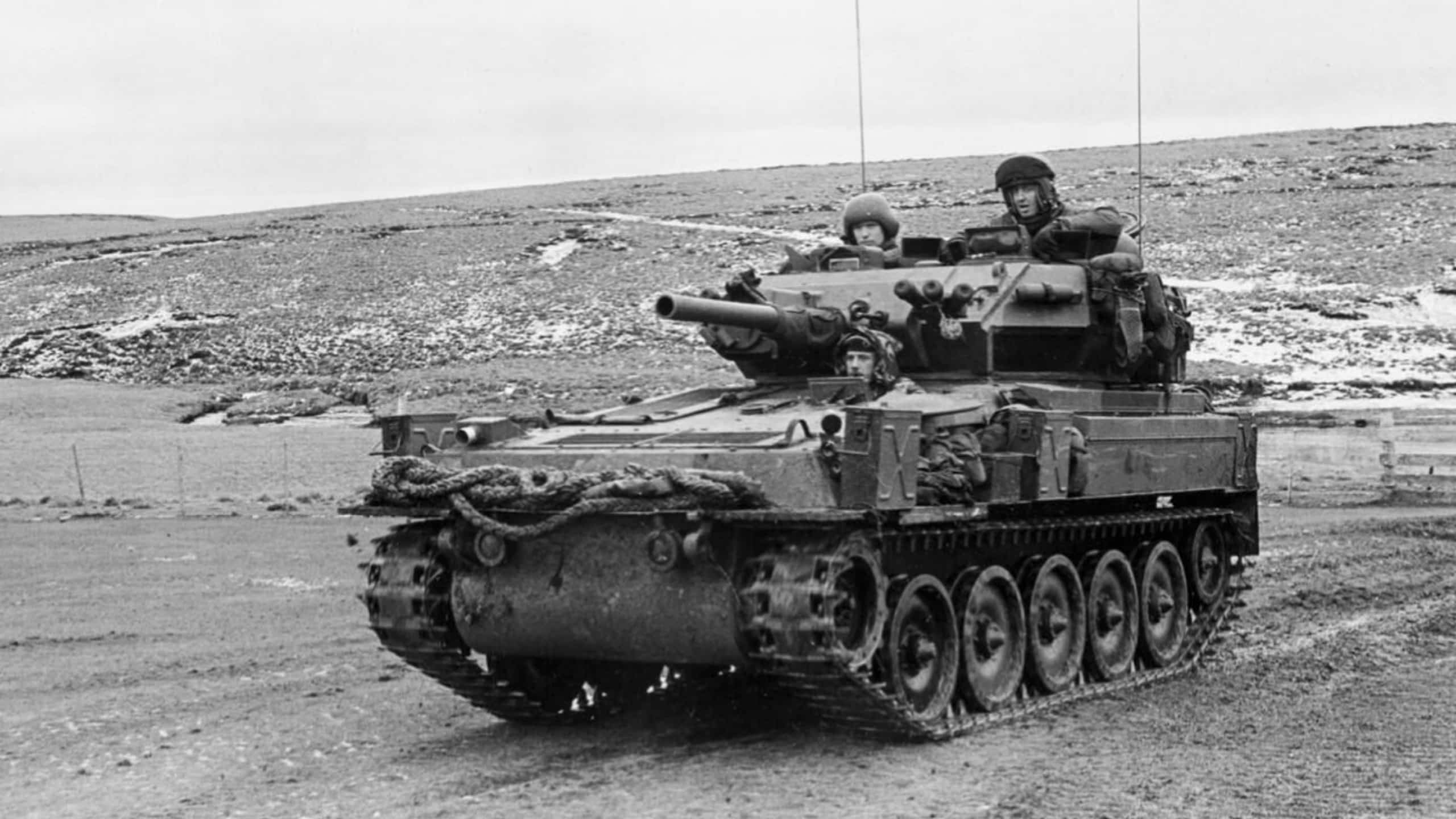Hornady’s new 338 ARC is like a lot of subsonic chamberings we already have, but much, much better.
I’ve been among the first to get my hands on some very interesting cartridges over the years, and I try to be objective in my response to these products and take a good look at what they’re trying to accomplish by merit of having been invented.
Some, I find, are simply marketing gimmicks that are a solution looking for a question. Sadly, some great ideas fail to succeed as a result of poor marketing and wanting consumer interest. Others, well, hit the mark, so to speak.
Introduction To 338 ARC
The 338 ARC is part of the venerable Advanced Rifle Cartridge (ARC) family that originated from the 6.5 Grendel/.220 Russian parent case. The 6.5 Grendel has enjoyed steady popularity over the past couple decades after it showed serious potential for fighting use early in the War on Terror era. It was proposed as something of a replacement for 7.62 NATO in long-range use, but it never truly caught on beyond its initial concept, with most military interest today being in Eastern Europe, though it’s yet to be seen if even this will ever come to fruition.

The 6.5 Grendel went head-to-head with other cartridges during this time of speculation in the early 2000s, but neither it nor its main opponent, the 6.8 SPC, managed to come close to unseating the reigning 5.56 NATO, both in military applications and on the civilian market.
However, these two rounds had something of a lasting legacy with a variety of parts being standardized around them to include bolts and magazines, as well as their case head diameters. The 6.8 SPC and its children have continually struggled to maintain relevance, largely due to insufficient manufacturer support and a general lack of enthusiasm.
In short, they all can’t be winners.
So, in our current day, the child cartridges of 6.5 Grendel have become quite common and are solidly in the mainstream, thanks to the tireless efforts of the Hornady company. The 338 ARC was, remarkably, the first ARC cartridge the company designed … all the way back in 2017. It’s a subsonic-centric cartridge designed for use on medium game at medium range.
Hornady was exceedingly clever in releasing this cartridge at the right time, which is something that has tripped up many other cartridge launches. The market is able to support a subsonic .338 bore rifle easily right now, where even a few years ago this would have struggled to gain traction.


It’s based on the AR-15 magazine dimensions using the 6.5 Grendel-style magazine and bolt face. And the “ARC” designation is becoming common now, as opposed to the “Grendel” name.
I’ll spare a dozen case studies on “failed” cartridges, as the 338 ARC has but two main competitors—and, suffice to say, it’s hard to talk about the newcomer without talking about what it will likely supplant in the field. The first thing people ask me when I show them this product is why it was designed when the 8.6 Blackout and 300 Blackout are alive and well.


Well, to be totally honest, the 338 ARC does what they both tried to do … but does it substantially better in virtually all aspects.
Subsonic Superiority
Any time a new round is introduced, it’s immediately compared to others in its class or at least to its near-peers. When it comes to the subsonic realm—cartridges that operate at just under the speed of sound so 1,000 to 1,050 fps—there’s much less wiggle room for improvement as compared to supersonic cartridges.
In dealing with subsonic loads and rifles, we’re, in fact, asking a lot. The bullet needs to be fast, but not too fast. It must also be accurate while suffering from a steep trajectory. It also needs to be powerful enough and cause enough terminal damage to be effective, though as ranges extend this becomes more difficult.
Basically, subsonic rifle hunting is a deliberate handicap, but is in common hyperbole in that it’s very advantageous and offers the hunter a number of real-world abilities not afforded by supersonic loads, primarily being very quiet.
In this subsonic world, we’re talking close range—completely inside 200 meters, ideally inside 150 meters. I’ve hunted quite a bit with subsonic factory loads, in particular the Hornady 450 Bushmaster 395-grain subsonic. This is a great killer and is quite quiet through a SilencerCo Hybrid 46M, but it drops like a rock in a sock. I typically won’t take a shot with it past 75 to 100 meters.


On the contrary, the .338 bore is an ideal size for the projectile, given what is trying to be achieved, and I think that Hornady really got this right. For the most part, the .30 subsonics aren’t great. I’ve used them until I gave up—there was just not enough energy. “But shot placement!” Yeah, I know. That doesn’t make up for low bullet mass—that’s called being lucky, even cruel if you run the logic to its end.
There are always the guys in this discussion who had a grandpa who shot deer with a .22 LR, but that’s a strawman argument at best. The bigger-bore subsonics just end up being hefty pistol rounds in .38 or .45 bore. I like them, but there are some disadvantages that include accuracy and inconsistent cycling with their common, straight-wall cases.
These are adapted to subsonic, not designed for it.
Where the 338 ARC fills the gap is in delivering a very long, heavy .338 bore bullet that maintains better accuracy than short and fat, big-bore bullets while offering 50-percent more mass than similar .30-caliber subsonics. The 338 ARC comes standard at 307 grains, as opposed to the 200-grain class bullets you’d get in 300 Blackout.
Bear in mind that it isn’t all roses … despite being the best in the pack on paper. The trajectory and impact energy are still not high compared to supersonic loads like .308 Win. We’re talking about 3 feet of drop here from 100 to 200 yards, so it’s a bit better than other subsonics but not even close to a supersonic rifle load.
Since it’ll be commented on in the future by critics, no, this round isn’t trying to be a National Match contender or long-range tack driver. It’s designed to be the best of the subsonic field cartridges using the best design and case layout possible for the most popular rifles made today … and now is when we get messy.


338 ARC Vs. 8.6 Blackout
The 8.6 Blackout (also a .338 diameter cartridge) has been out for a while now. Not surprisingly, the 8.6 Blackout is in direct competition with the 338 ARC, but it falls significantly short in a number of areas that put it at a total and distinct disadvantage. The problems are endemic to the cartridge.
The next issue that 338 ARC bests the 8.6 in is twist rate. I’ve been critical of the 8.6’s 1:3 twist rate since day one. This fast twist rate severely limits the bullet choice to essentially monometal: Jacketed bullets can strip in this bore. The other issue was the unsubstantiated claims about the enhanced terminal performance imparted on tissue with this fast twist rate. In my time with the 8.6, I never found these results to be repeatable. The shape of a given bullet dramatically impacts the so-called “radial” energy given off by the spin of the projectile, a HPBT profile bleeding differently from a round nose or perfectly cylindrical projectile.
There was, in my opinion, no legitimate reason for this twist rate, aside from the somewhat elitist notion that people should be using monometal bullets because they’re better somehow. This “let them eat cake” mentality just means you can’t use trusted bullet designs in the 8.6 easily … or at all.
The 338 ARC is designed around a slower twist. I hesitate to say exactly what the final barrel manufacturer twists will be because it’s very early in the game, but the most common twist rate listed at this time is 1:8. This will allow a far greater number of .338-diameter bullets to be used for the reloader, as well as a far greater range of suitable practice and hunting loads in both subsonic and supersonic velocity ranges. And yes, you should be able to use all the same monometal bullets as you would in the 8.6, making it far more versatile overall as a medium- to large-game, short-range cartridge.
The next leg up the 338 ARC has over 8.6 is its market feasibility. It’s a drop-in for standard AR-15 rifles, requiring just a barrel and bolt/magazine swap. While the 8.6 is certainly not at a disadvantage being a direct barrel swap for 308/6.5CM rifles, the sheer commonality of the AR-15 platform and the established success of the ARC line is quite important here: You get equal performance with the same bullet in subsonic … in a lighter rifle with common parts.
Concerning yourself with supersonic performance in what are subsonic-centric rounds is bit of a moot argument: Neither 338 ARC or 8.6 is close to the power and range of supersonic .338 bore rifles. Plus, while not boat anchors, the large-frame AR rifles the 8.6 requires are beefier and heavier.
I mentioned earlier that the 338 ARC is arriving at the correct time in the market, a professional move by Hornady. The 8.6 suffered at its outset because there were so few 338 suppressors and fewer 9mm (.355) pistol suppressors that were feasible for rifle use. Today, we have a large category for these big-bore suppressors that are quite small and light, many convertible to a wide range of uses. The ability to easily suppress .338 bore rifles is here, so the time is perfect.
Not only that, but the barrel length situation with 338 ARC makes it feasible to use any length to get reliable performance. You don’t need any special sauce or particular load to achieve results, be it 16 or 12 inches.
338 ARC Vs. 300 Blackout
That last point is pretty important: The other main rival to the 338 ARC, the .300 Blackout, has always struggled with unsuppressed use and cycling without a can attached in subsonic. The 338 ARC is optimized to work in all configurations, which is great if you want to get range time while waiting for your suppressor. I do like the .300 Blackout for what it is, and it has been a truly successful cartridge, arguably the first cartridge people really wanted to suppress in the AR.


I’ve never been very happy with any 30-caliber subsonic on game. I think that, as a close-range, quiet fighting cartridge in the right gun, it makes a lot of sense, but they really lack that mass for hunting deer or hogs past bow range. I consider the subsonic .300 Blackout with a good bullet to be a 50-yard load. This low-velocity with a 200-grain-class bullet leaves much to be desired. It’s just never going to have the weight to extend those ranges or deliver more energy. Bearing in mind that this is subsonic ammo we’re talking about, the performance gap between .300 Blackout and 338 ARC is substantial.
Before we talk guns, I will close the ammo question by saying this is what suppressor enthusiasts and hunters have been wanting: a true solution for a real problem. In the 338 ARC, we have a well-designed, SAAMI-approved cartridge that can use common .338 bullets and cycle in the AR rifle with only small changes. Not only that, it’s coming to market with a tried-and-true Hornady Sub-X bullet and as part of the established ARC family.
338 ARC Guns—What to Expect
The AR build featured in the photography of this article was sent to me from Faxon Firearms. I must make note that this may or may not be a factory offering in the future. This is a prototype build to demonstrate the concept. This isn’t to say you won’t see a similar product; I just can’t say for certain.


As of the time of this writing, there are many companies working on introducing guns to use the 338 ARC. Suffice to say, the public list of companies supporting 338 ARC is already large, but in the future you should be seeing not just AR upgrades … but also bolt actions and more.
While this may change with time, it appears that the majority of muzzle thread patterns are going to be 5/8-24 inch, meaning that it’ll use the same muzzle devices as .30 cal. This is something to be aware of, as some muzzle devices are going to cause issues.
Another thing to consider is magazines. There are plenty of them out there for the ARC family, but they vary widely in shape and capacity. They are also comparatively expensive against common 5.56 mags, so be prepared for a little sticker shock. This will come less into play for hunting scenarios and in bolt actions where the capacity and size are already limited, but if you’re hoping to stuff 30 rounds of these 307-grain bullets into a mag, well, you may need to do a bit of trial and error as the ARC family magazines are only just now really starting to become widely available.
Because this is a .338 bore bullet, you’re not going to be able to use .30-caliber suppressors. Likewise, .36-cal suppressors (350 Legend, 9mm, etc.) will work so long as they’re rifle rated. I’d not go putting a pistol can on this—even shooting subsonic. It’s not worth the risk.
In Closing
I’m optimistic about this cartridge as a subsonic deer and hog hunter. I think that it really did hit the market at exactly the right time at all points, and it is, in fact, what people like me were asking for after years of adapting existing rounds to subsonic instead of doing something subsonic on purpose. We finally have a much better-designed cartridge than 8.6 Blackout and a much more powerful one than the 300 Blackout.
Editor’s Note: This article originally appeared in the February 2025 issue of Gun Digest the Magazine.
Raise Your Ammo IQ:
Beyond The 6.5 Creedmoor: The Other 6.5 Cartridges
The Lonesome Story Of The Long-Lost 8mm
Why The .300 H&H Magnum Still Endures
.350 Legend Vs .450 Bushmaster: Does One Win Out For Hunting?


Next Step: Get your FREE Printable Target Pack
Enhance your shooting precision with our 62 MOA Targets, perfect for rifles and handguns. Crafted in collaboration with Storm Tactical for accuracy and versatility.
Subscribe to the Gun Digest email newsletter and get your downloadable target pack sent straight to your inbox. Stay updated with the latest firearms info in the industry.
Read the full article here













